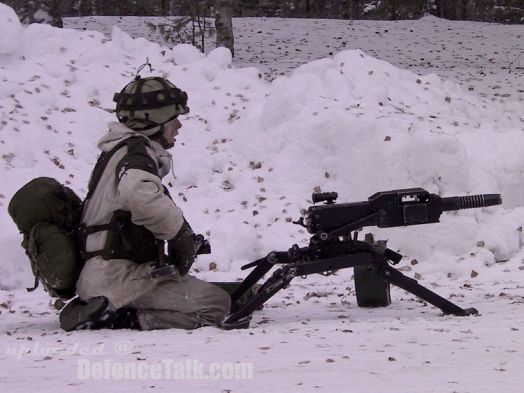KrKK (AGS-17 Plamya)
Finland got their first grenade machineguns in 1993. KrKK is usually
used mounted on a tripod even though it easily could be used
vehicle-mounted as well.
For ground transport, the system breaks down into four parts. The KrKK
crew consists of a gunner and two riflemen-assistant gunners. In
training, usually one assistant. When they dismount, the gunner carries
the sight and launcher, the first assistant carries the tripod and a
magazine, and the second assistant carries two additional magazines.
KrKK is reportedly very accurate in the semi-automatic mode and is also
quite effective in area coverage in the automatic mode. An important
characteristic of KrKK is its ability to provide indirect fire from
protected positions against enemy troops in trenches, on reverse slopes
of hills, or behind wooded areas, like a "light automatic mortar". The
range table allows the gunner to adjust his fire rapidly for various
ranges without computing elevations for the sight. Despite a smaller
caliber, the 30mm grenade has a higher effectiveness compared to 40 mm
NATO. For example, the VOG-30 fragmentation grenade body is 60 percent
heavier than that of the M384 grenade (USA), while its effective lethal
area is 50 percent larger.

Calibre: 30 mm
Weight with tripod: 31 kg
Weight of full beltbox: 15 kg
Firing rate
- burst fire 6-7 shots/s
- single-shot fire 1-2 shots/s
Firing distance
- direct laying 700 m
- indirect fire approx. 1700 m
Grenade cartridge
- grenade weight 280 g
- muzzle velocity 185 m/s
- effective shrapnel radius 7 m
- impact-action fuse
- belt box holds 29 cartridges
Optical director
weight with base approx. 30 kg
Country of manufacture: Russia
